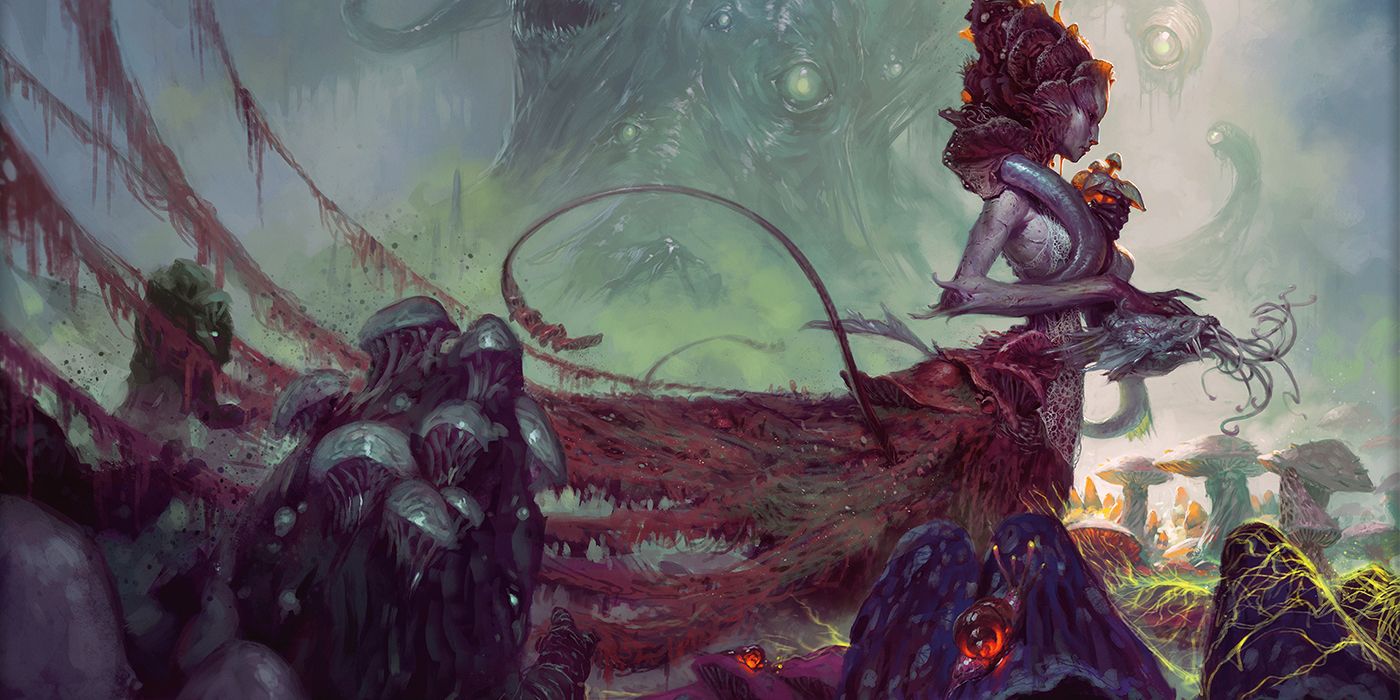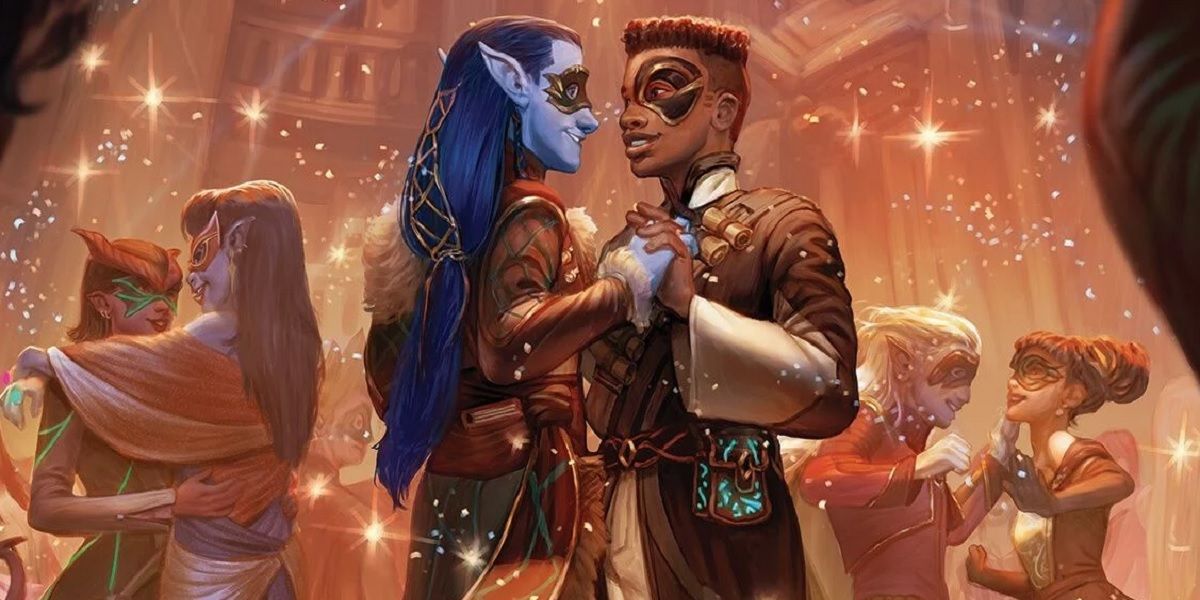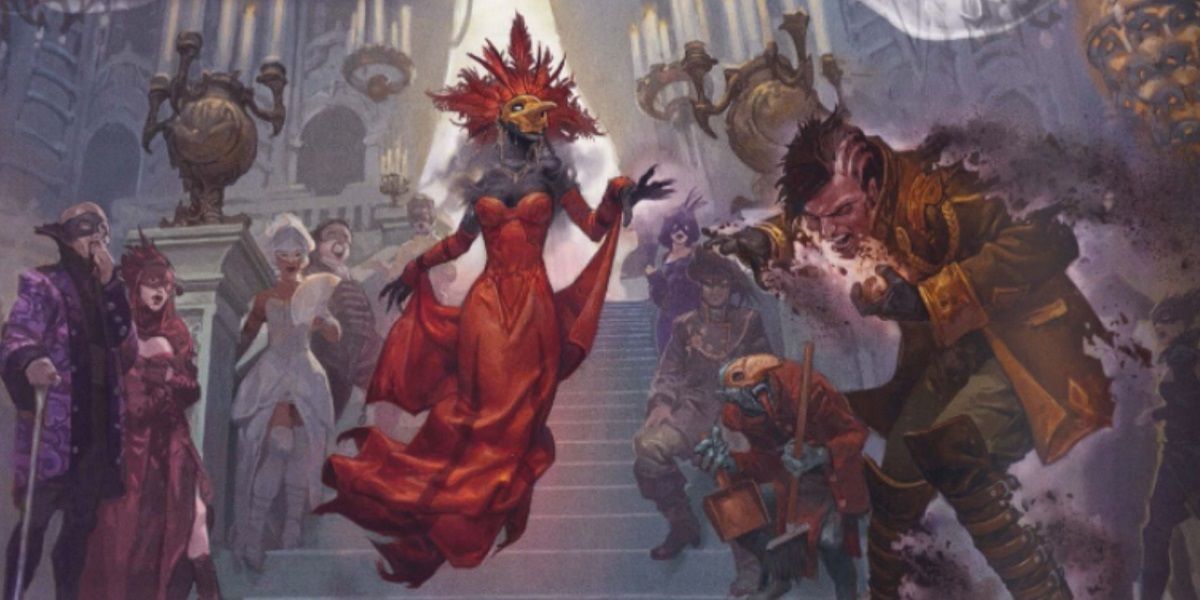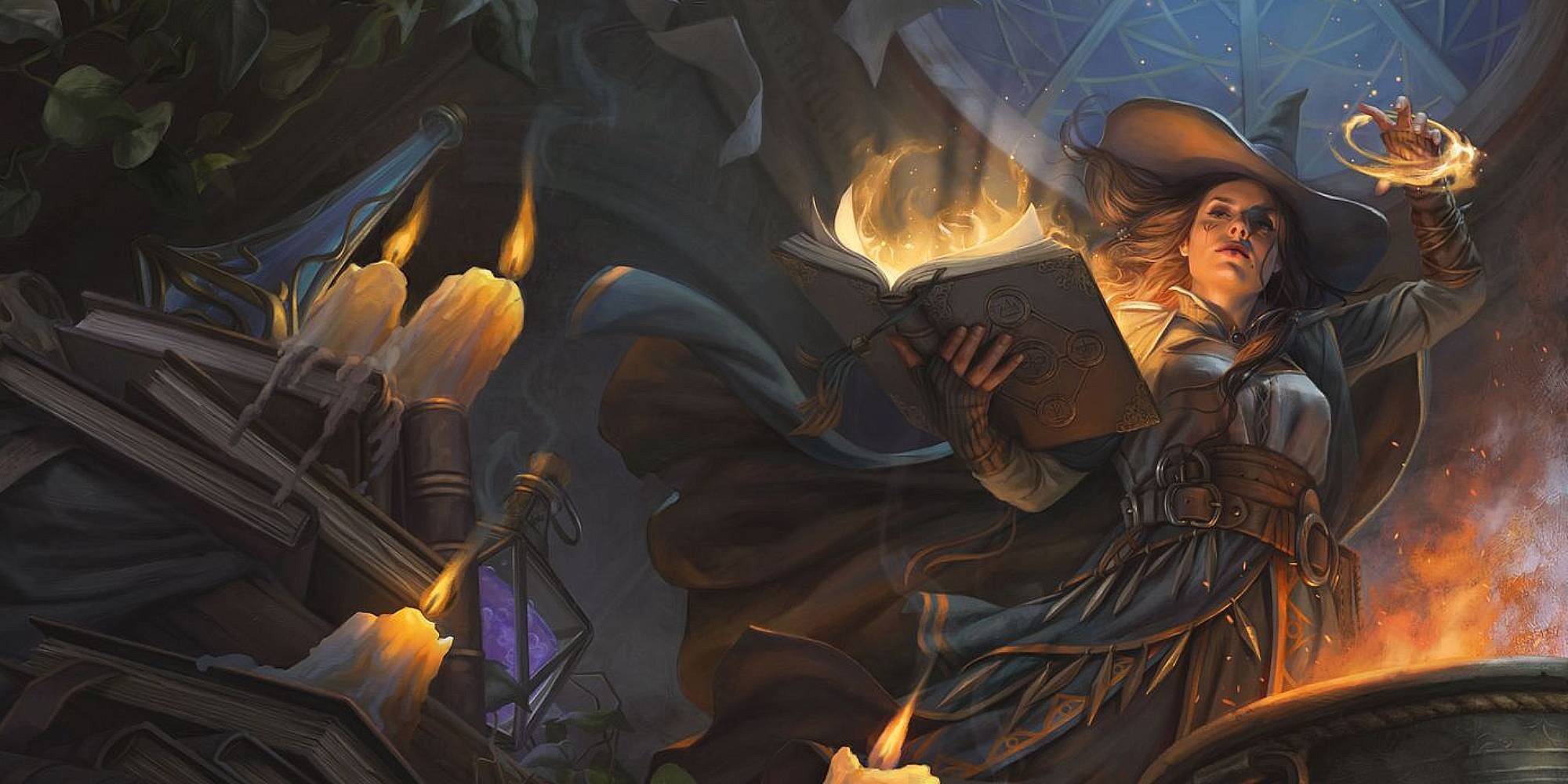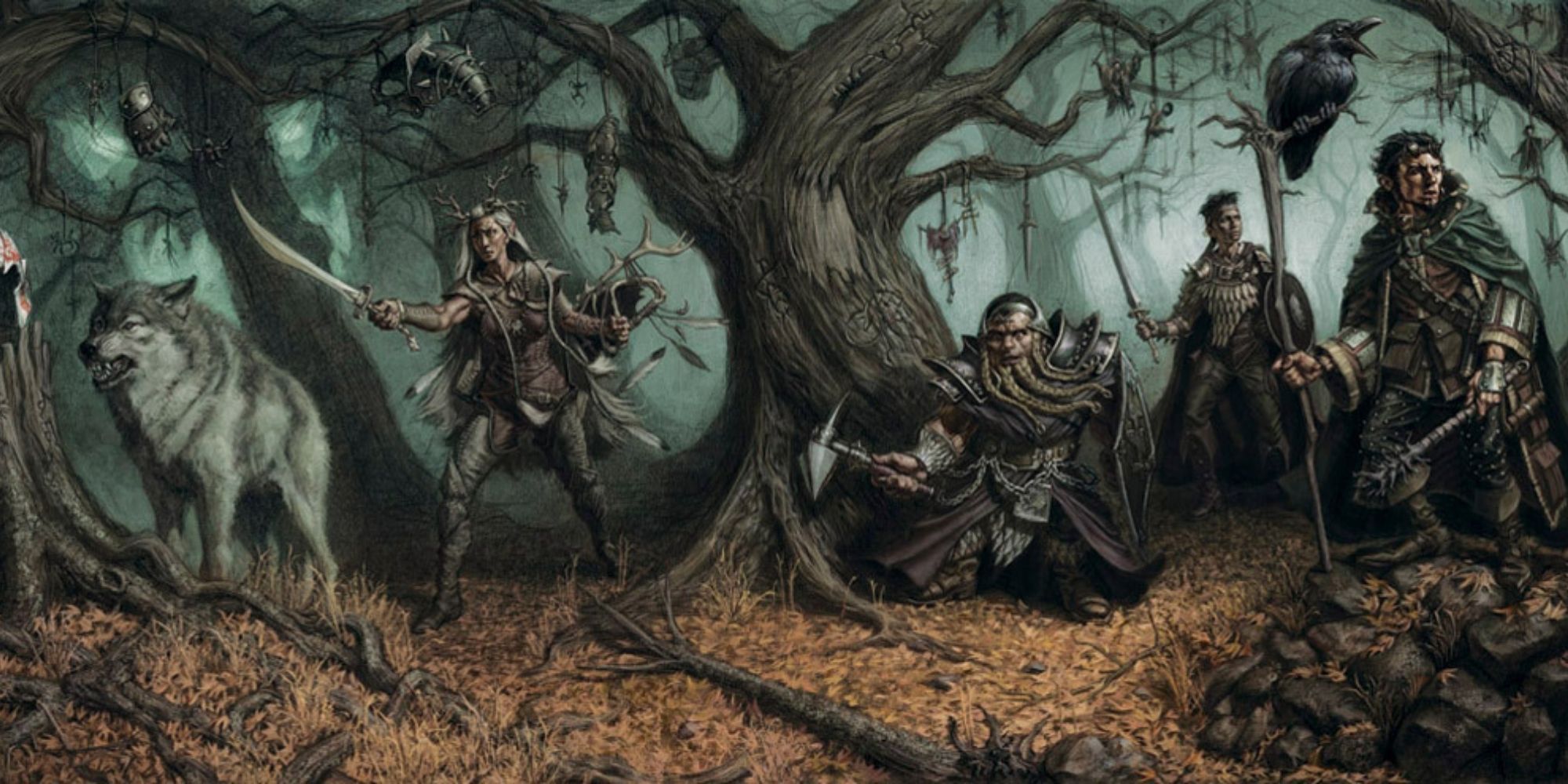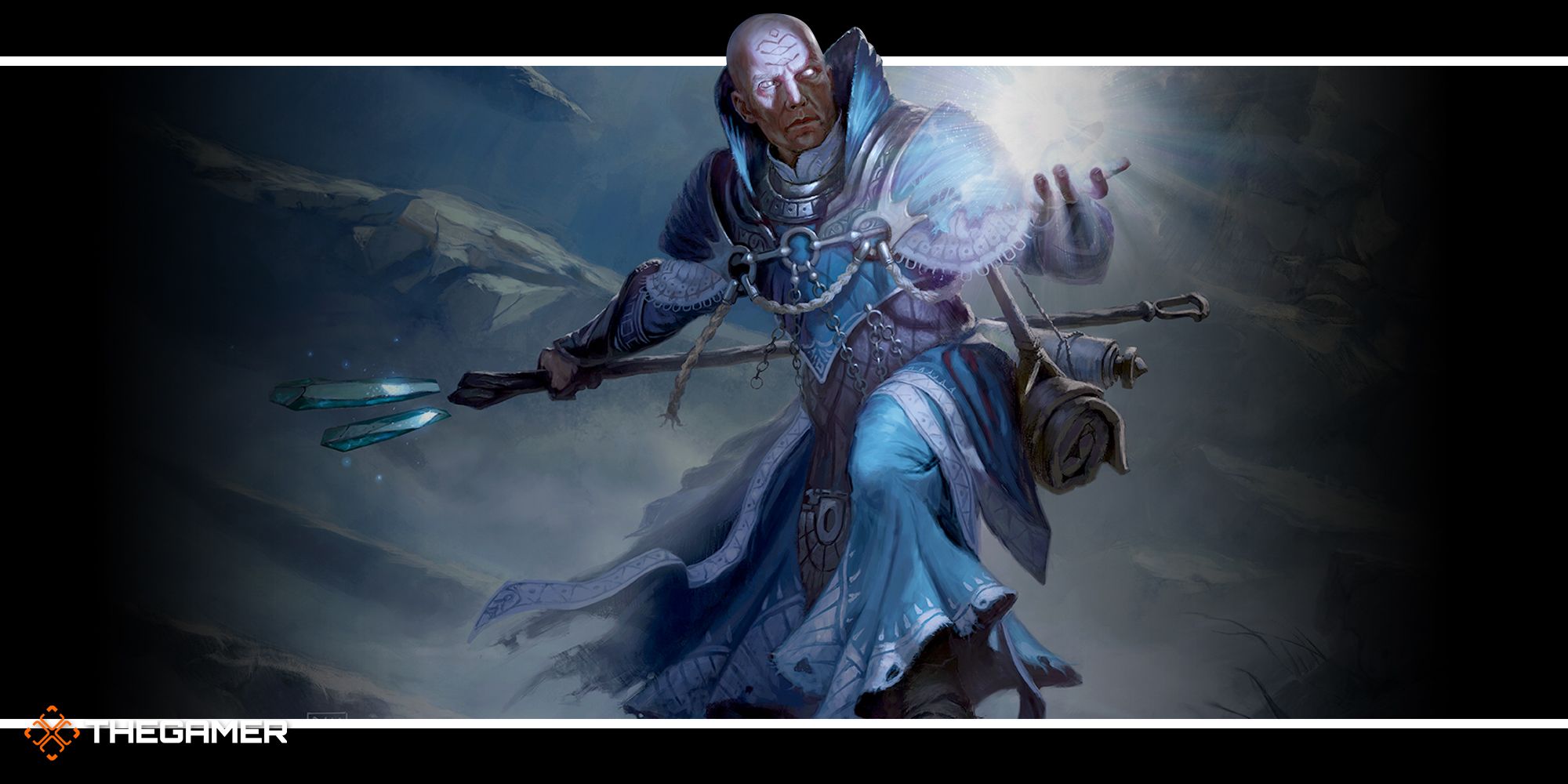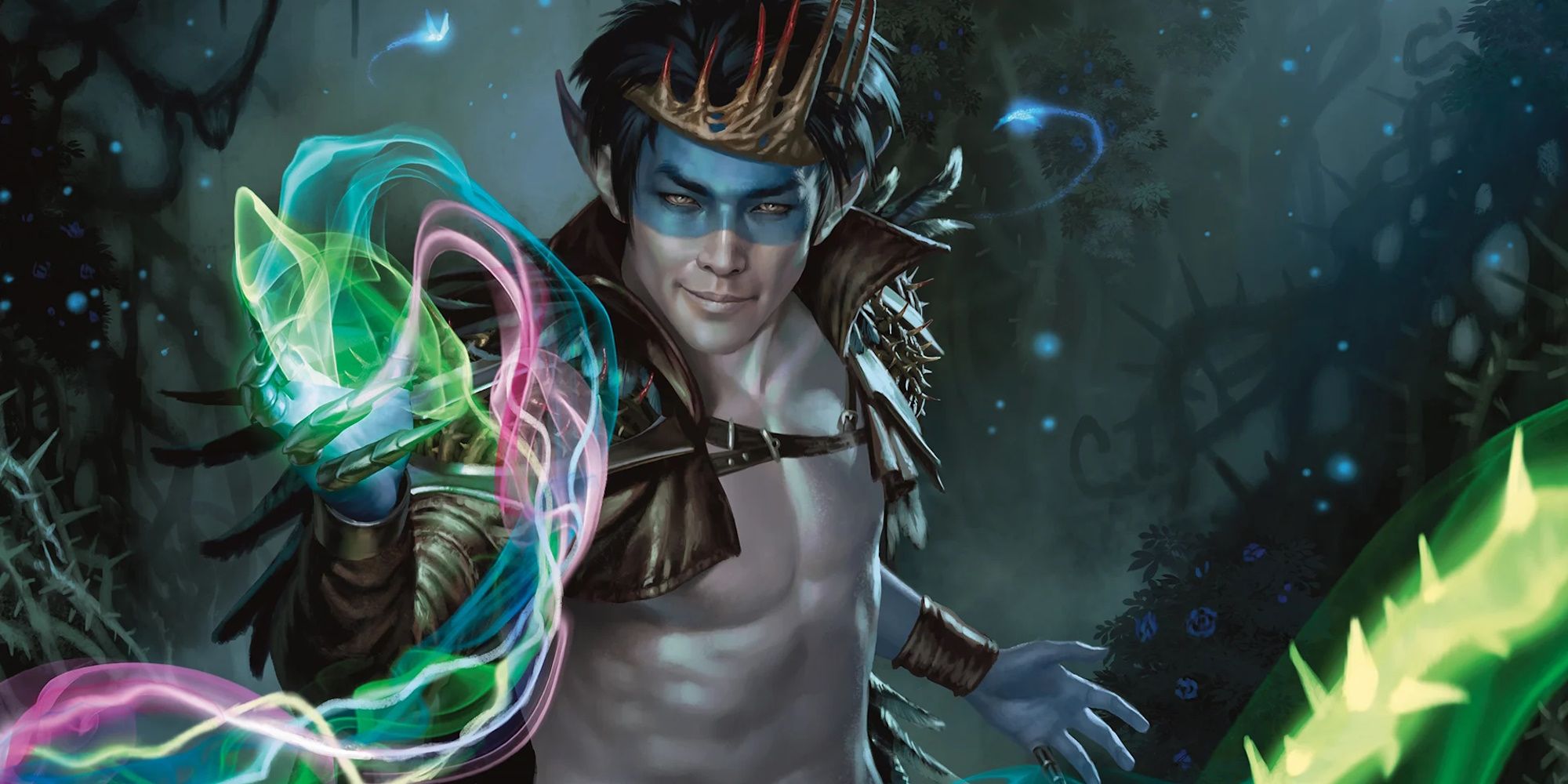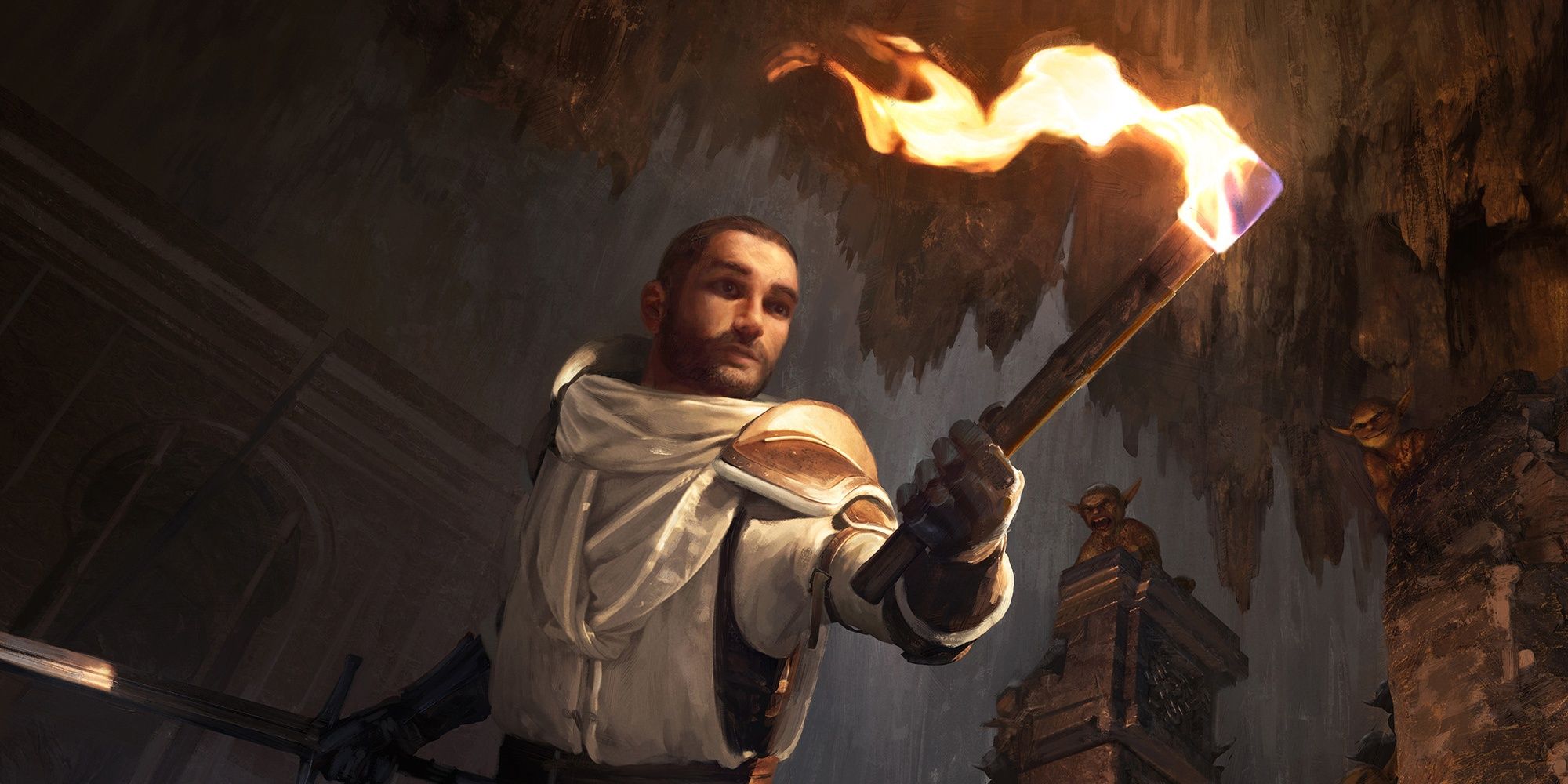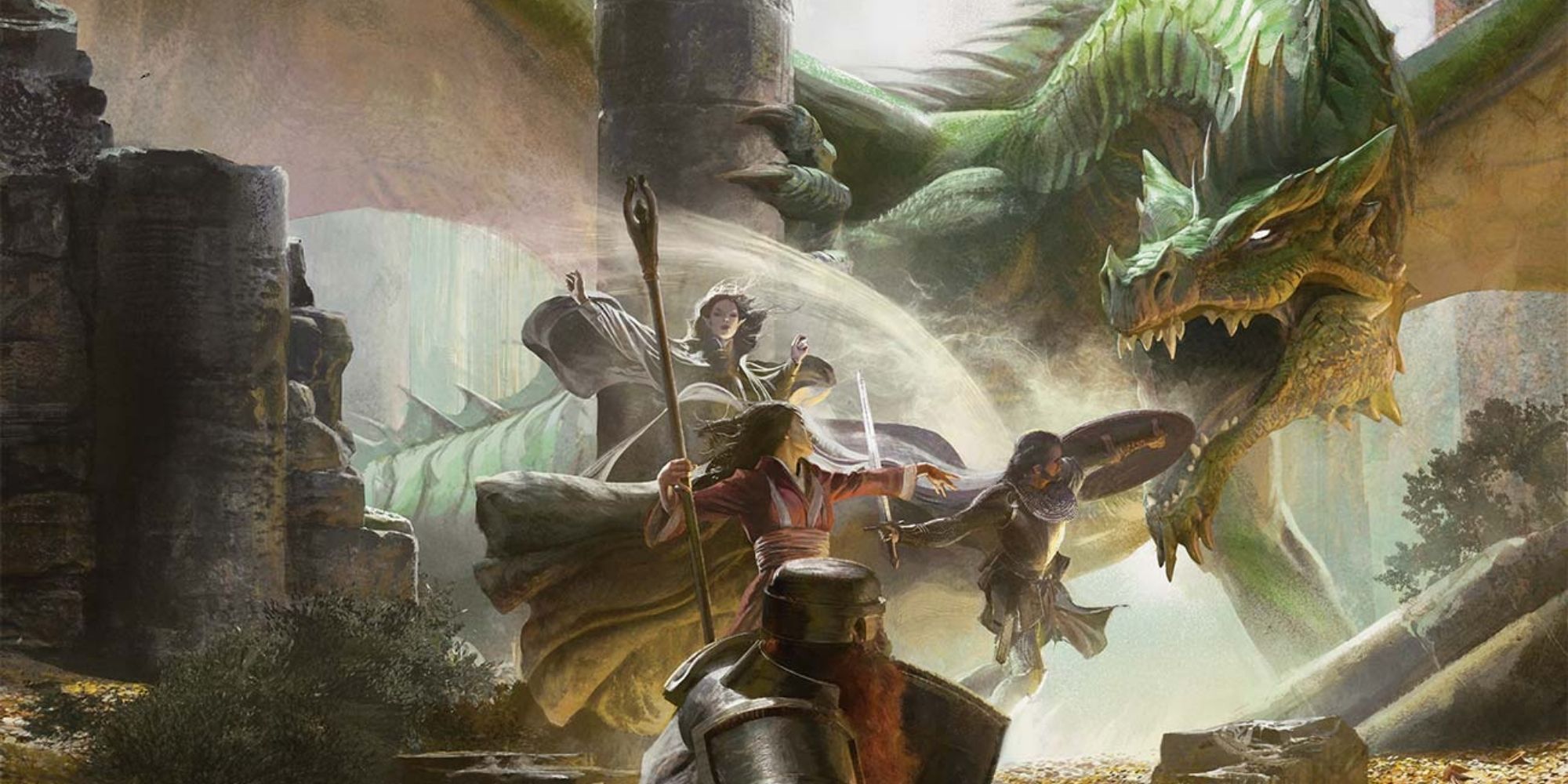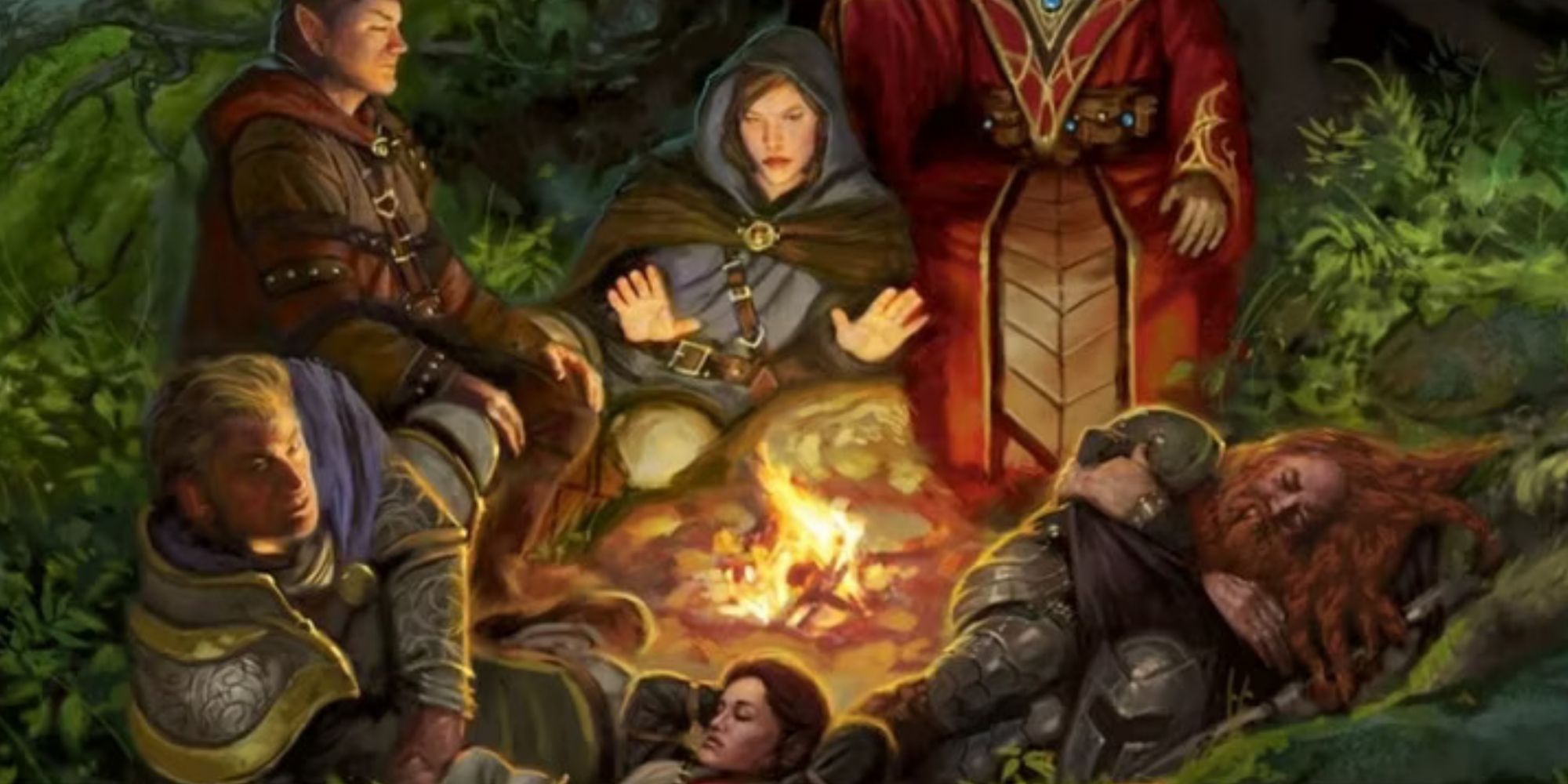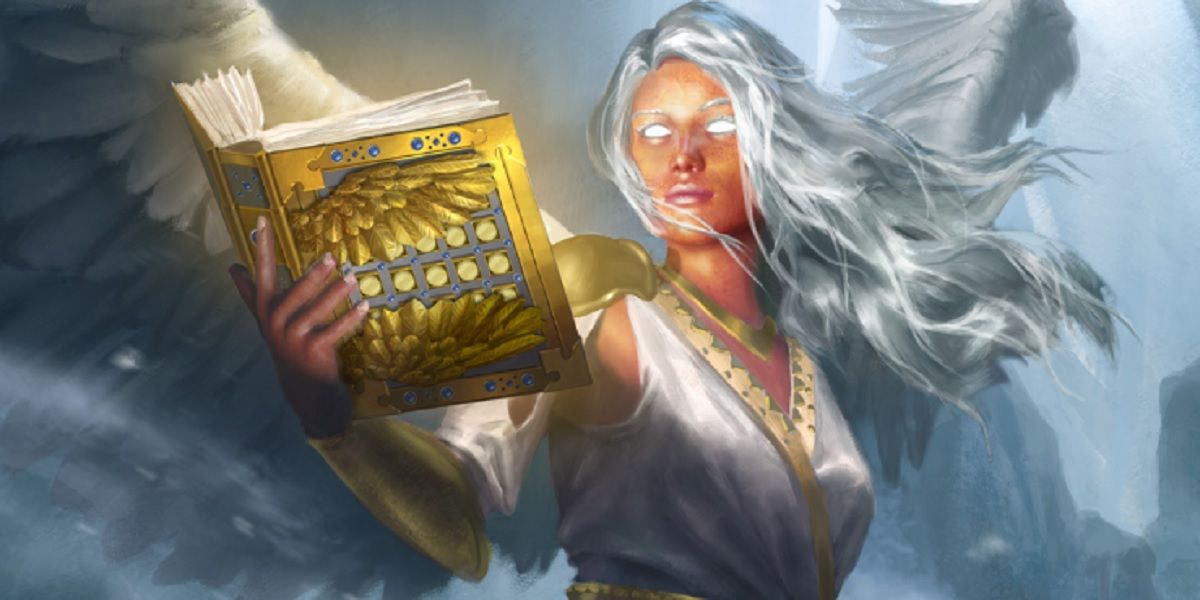In Dungeons & Dragons, magic is one of the most powerful forces. Those who wield it have the ability to manipulate and shape reality to their own desires. In D&D 5e, many classes can use magic, each in their special way. Included in these classes are Clerics, Warlocks, Sorcerers, and Wizards. And while they each attain their magical abilities in different ways, they do share one thing in common: they all started out using 1st-level spells.
The goal of every spellcaster is to grow more powerful and eventually gain that sweet 9th-level spell slot, but even the greatest caster has to start somewhere. While you're working your way up to that, here are some of the best level-one spells for your new or low-level magic user.
Updated July 6, 2023, by Sean Murray: There have been some new additions to D&D since this list was last published, and we may have missed a few noteworthy first-level spells the first time around. So we've refreshed this list and added even more spells so you can easily pick the best ones for your chosen class.
29 Entangle
An old-school crowd-control spell, Entangle is more commonly used against players at low levels as opposed to being wielded by them. It affects an area covering a 20-foot square making it difficult terrain, so it's possible to get across it, but only if a character has a high Strength score and perhaps a skill like Acrobatics or Athletics. The Strength stat is the saving throw for this spell, and if a character fails, they are trapped for the round.
A spell that consists of a mass of vines sprouting from the ground and resisting anyone who wades through it would have to be a Druid's spell. That being said, any spellcaster that can use scrolls can also cast this spell if they buy or pick up a copy of it.
28 Disguise Self
More than likely, there will be situations during a campaign where you'll have to conceal your real identity. Whether it's to evade being spotted or infiltrate someplace, Disguise Self is one of the best first-level spells. From the School of Illusion, the one who casts it can make themselves and everything on their person look completely different for an hour or until it is dispelled.
There are restrictions to the spell, as you can't change your body type, and your new image has to have the "same basic alignment of limbs." The changes made aren't physical, and a creature can make an Investigation check and contest it with your Spell save DC to inspect and see through the illusion.
27 Charm Person
Charm Person is a versatile spell that can be used in both combat and social situations. It's one of the best first-level spells for D&D 5e, dates from the very beginning of the franchise, and its versatility and range of use, depending on the class or situation, are the reasons it has stood the test of time.
The target of this spell has to make a Wisdom saving throw, which they have a bonus for if you're in combat with them at the time. At higher levels, you can use this spell to charm more than one creature at once, which can be handy when dealing with guards, bandits, or dinner guests.
26 Tasha's Hideous Laughter
Tasha's Hideous Laughter is a first-level Enchantment spell that can be used by any class that pulls from the Bard or Wizard spell list. When cast, a player can target a creature within a range of 30 feet and make its target fall Prone into a fit of laughter for one minute if they don't succeed at a Wisdom save. A Prone creature can only crawl and has disadvantages on its attack rolls.
It's a pretty good way to delay an enemy's attack as they have to spend a turn getting up from being Prone, even if they manage to succeed in their Wisdom saving throw.
25 Feather Fall
There's also a ring in the game that can grant this ability to anyone wearing it, but unlike this spell, that only benefits the person who has it equipped. When cast by a Bard, Wizard, or Artificer, however, it can benefit up to five intrepid adventurers.
It seems situational at first, but this spell has all kinds of uses, not just the obvious benefit of saving your group from a nasty tumble. Feather Fall is also ideal for reaching inaccessible places in dungeons, near castles, and on cliffsides.
24 Comprehend Languages
It's not just for eavesdropping on foreign dignitaries or strangers in a tavern from a far-flung land, but that is one obvious advantage of this very useful spell.
Comprehend Languages also works on print, so it's handy for deciphering virtually any text as long as it's not a code or written in a language that isn't a conventional reading script, like numbers or musical notes. That means you could use it on an ancient map as easily as you can spy on those mysterious dinner guests.
23 False Life
Although False Life is associated with Clerics of certain Domains, Sorcerers, Wizards, and Artificers also have access to this handy spell. This version, however, is strictly a self-cast, whereas Clerics can usually cast it on party members.
A character can use it to give themselves a few extra hit points, which is really useful in many situations. It can be used as a last resort in a tough fight, or you can use it right before a fight starts to give a character an edge on the amount of damage they can take.
22 Goodberry
At level one, Cure Wounds offers 1d8 of healing plus whatever your spellcasting modifier. At low level, this often means that your maximum potential healing is around 10. Goodberry provides 10 berries that each heal one hit point. That's 10 guaranteed healing versus a big maybe from Cure Wounds.
The only downside is that it takes a full action to consume each Goodberry, so its usefulness in combat is limited. But outside of combat, each Goodberry can sustain a creature for a full day. Who needs rations when you've got Goodberries?
21 Unseen Servant
For anyone who likes the spell Mage Hand but wants something more versatile, Unseen Servant is the best first-level spell. It's a Conjuration spell, creating a mindless, invisible force that can perform simple commands. You can command it to move up to 15 ft at a time and have it interact with an object.
The Unseen Servant cannot attack, and it has low AC, Strength, and Hit Points, but it can do things like serving meals, lighting fires, and cleaning. The spell ends if it gets hit or moves more than 60 feet away from you.
20 Create or Destroy Water
A handy spell that's probably more useful in some environments than others, the ability to Create or Destroy Water sounds like a natural ability that some casters would have. A survivalist class build might also have this ability depending on their Background or Skills.
This spell allows the caster to conjure ten gallons of water anywhere within a thirty-foot range. They can target a container if the water needs to be stored or dump the water on a candle or campfire. Druids and Clerics can learn this spell, and it doesn't often come in scroll form, so characters who have access to these spells should take advantage of it and use them.
19 Faerie Fire
Beset by invisible beasts? Or maybe just a monster with higher AC than your fighter can deal with? Then Faerie Fire is the spell for you! With one mumbled incantation from your party's druid, Faerie Fire will make any opponent glow a rotating mixture of blue, green, and violet hues, making that enemy visible and giving allies advantage on attack rolls.
You can even use Faerie Fire as a source of light in a pinch, but it’s best to leave light generation to a handy cantrip.
18 Absorb Elements
Absorb Elements is a spell available to Wizards, Artificers, Sorcerers, Druids, and Rangers, which are all casting classes with some kind of elemental experience or knowledge. The caster can absorb any kind of elemental energy near them, whether it's natural or magical, and store it for later use.
This is commonly the kind of power that an Artificer would have, but this spell is available to several classes, and it's also handy for multiclass characters that also do some melee damage. If a player uses this spell to store energy, their next hit deals an extra 1d6 of damage.
17 Wrathful Smite
A handy spell for virtually all casters, this is an essential addition for a multi-class character that combines spellcasting with melee damage. However, only Paladins and Clerics have access to the spell to keep it from being too overpowered.
Wrathful Smite imbues your character's weapon for one minute, a duration that lengthens as their levels progress. At level one, the spell gives the weapon an extra 1d6 of damage, and if a creature is your target, it has to make a Wisdom saving throw or be Frightened until the spell is over.
16 Ice Knife
Players get so focused on fighting creatures like trolls that require fire or acid power that it's easy to forget that the element of cold also has its uses. Elementals, dragons, and a host of other creatures that are sensitive to lower temperatures will take cold damage from this flying dagger even if it doesn't hit them.
The great thing about Ice Knife spell is that the caster gets two chances to hit the target. The flying sliver of ice that the caster initially throws causes 1d10 damage if it does hit, and hit or miss will explode, causing 2d6 cold damage.
15 Chaos Bolt
In keeping with the name, Chaos Bolt offers a significant amount of damage without providing the caster with foreknowledge of just what sort of damage the spell will deal. It could be anything from Acid to Thunder, with a d8 roll being the determining factor.
Chaos Bolt is the Sorcerer's bread and butter damage-dealing spell at low levels, offering significant range and the potential for even greater effects if you happen to roll doubles on your D8s. Unfortunately, Chaos Bolt's damage doesn't scall all that well past first or second level, so you'll likely replace this spell with something that offers more utility as your cantrips overtake it as a more reliable damage dealer.
14 Hunter’s Mark
Hunter's Mark is what makes the Ranger worth playing. You get an extra 1d6 of damage, advantage on Survival and Perception checks to track the affected creature, and you can swap it onto something else once your blade (or bow) fatally finds its mark.
You even get to take your attack after casting Hunter's Mark since it's a bonus action. However, as a concentration spell, you won't be able to mix it with some of the Ranger's more impactful crowd-control spells.
13 Hex
The Warlock version of Hunter's Mark, Hex offers the same 1d6 bonus damage while also giving the target creature disadvantage on ability checks of a single ability. Considering Warlocks are consummate spellcasters, this can prove quite advantageous when you really need that spell to stick.
On top of that, Hex is bonus action, freeing up your action to perform daring feats of danger. Or just hide if you're more of a support Warlock.
12 Cure Wounds
Cure Wounds is pretty much the opposite of Inflict Wounds and is a spell that usually goes hand in hand with it. This Evocation spell lets you cure a creature you can touch, restoring a certain number of their Hit Points. You roll a 1d8 and then add your spellcasting modifier, which for Clerics, for example, would be their Wisdom modifier.
It's another spell that gets stronger when cast at higher levels, and it has no effects on constructs or the undead. It's also one of the best D&D healing spells to use when first starting.
11 Bless
Bless is a first-level spell that can be used by Clerics and Paladins, and it's from the school of Enchantment. This spell lets you buff up to three creatures of your choice - one can even be yourself - within a 30 ft radius. Whenever Blessed creatures make attack rolls or saving throws, they can roll an additional 1d4 and add that to their saving throw or an attack roll.
It's a great way to add a little extra power to an attack or help you and a few party members make an important and maybe even life-saving dice throw.


